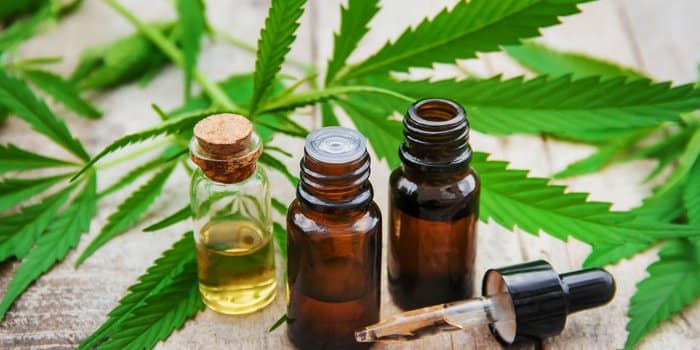The global market for the overall cannabis sector is poised for exponential growth. What was, as of 2016, a $9 billion industry is expected to achieve a compound annual growth rate of 34.6 percent, reaching $146 billion by 2025. Within the industry, the most optimistic projections center on cannabis-based extract products.
There’s a long way to go until 2030 arrives, and we are talking about an industry still in its infancy. But for those who have recently entered the cannabis marketplace or are looking to jump in, it’s helpful to have a clear and specific understanding of the factors driving the steadily expanding competitive profile of cannabis and hemp extract — and why market share for cannabis flower is destined to keep shrinking. Let’s take a look at six contributing factors:
1: Cannabis extract is safer than the cannabis flower.
One reason the market has gravitated to extracts over flower is safety — and particularly safety concerns associated with pesticide contamination. Just last year, for example, multiple news reports cited the presence of dangerous contaminants in a wide range of cannabis products being sold in California.
The extraction process associated with conversion to cannabis oil creates a product that’s simply safer than cannabis flower. That’s because oil-related extraction methods involve levels of high pressure and high temperature that kill off any lingering bacteria. Reflecting growing acceptance of the safety payoffs associated with extraction, the state of Florida recently began placing new restrictions on its cannabis industry to ensure that producers are generating products whose processing adheres to strong public health standards.
Vaping cannabis extract is also a safer alternative to smoking flower because there’s no risk of inhaling carcinogenic smoke. Some industry analysts also state that oil offers greater protection against liability than flower.
2. Cannabis extract offers greater consistency.
The cannabis extraction market is also growing rapidly because it offers end-users a more consistent and reliable product than flower.
Cannabis oil extraction uses automated instrumentation that allows for superior processing and consistent levels of dosing. Technologies deployed for oil extraction enable the manufacturer to fine-tune the final product’s ultimate composition. This is particularly important when it comes to the final mix of such components as cannabinoids and terpenes. By contrast, cannabis flower processed by humans doesn’t meet consistent quality standards. Absent the automated process, each new batch of flower-based product can vary in consistency.
Accurate dosing is also complicated by the way the flower is ingested — as well as by the absence of a homogenized form of the product. Each flower and each of its component parts are different. This prevents the consistent regulation of the amount of THC (the plant’s intoxicating ingredient) in the final product.
3. Cannabis extract offers a wide and growing range of medical benefits.
Compared with cannabis flower, oil extract opens the door to a far greater number of pharmaceutical uses and specialized forms of medical treatments. The pharmaceutical industry — which devoted an estimated $51.2 billion to research and development in 2014 — is keenly aware of these opportunity and is investing heavily to capitalize on them. From our work within the industry, we have witnessed deep engagement in research that would isolate the ways particular cannabinoids can be incorporated into medications.
Research has indicated, for example, that oil-derived cannabigerol (CBG) has anti-inflammatory effects. In addition, a 2015 analysis by the National Institutes of Health “strongly supports” CBD as a treatment for a range of anxiety-related disorders.
4. Cannabis extract presents end-users with an array of choices.
Another factor driving the growing dominance of cannabis oil is the wide range of choices it offers. The ultimate oil product can be modified in respect to taste, texture and color. Formulators, for example, can create oil that is smooth and not harsh. The oil can also be made to taste good.
Choice is further expanded by newly introduced vaping pens that feature different batteries offering varying voltage systems. In addition, Bluetooth connections are now available that allow users to track dosage on their phones.
5. Cannabis extract use is socially acceptable.
Considerations of social acceptance also contribute to the expected market dominance cannabis oils. People feel less social stigma when using a vape pen as opposed to smoking the cannabis flower through a cigarette or in a pipe. In addition, vape pens are less conspicuous. They’re more convenient than the flower alternative and allow users to dose or treat issues with more ease and privacy.
Cannabis and hemp oil is also useful in other formats beyond vaping, including tinctures, capsules, food (such as baked goods and gummies), beverages and pet drops.
6: Cannabis extract is appearing in growing numbers of mainstream products.
Cannabis and/or hemp extract — most commonly CBD — is popping up everywhere. It is appearing in steadily growing numbers of cosmetic products, medications and foods. Retailers, drug makers and food purveyors — encouraged by their marketing teams — are aggressively expanding the product’s reach.
With an eye on cannabis and hemp, smart investors and entrepreneurs are seizing new opportunities for business success. They’re getting acclimated to some of the competitive basics that underpin the industry, as illustrated by the six factors listed above. More states are inviting the industry in. The momentum is real.
With the right advisors, the right technology, the right financing model and the right business plan, these investors and entrepreneurs will set themselves on the path to success in 2019 and beyond.
Original Article: https://www.greenentrepreneur.com/article/327365












